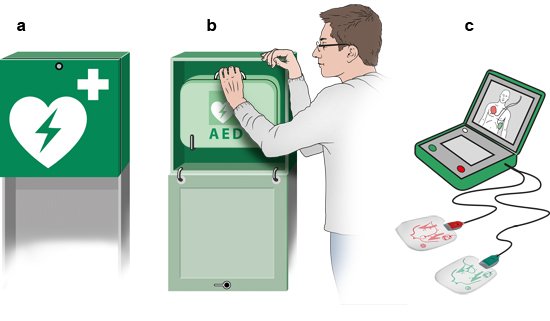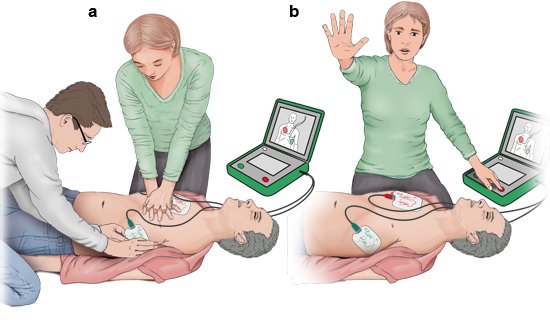How do automated external defibrillators work?
An AED looks like a first aid box or a small toolbox. The box has two cables attached to it, each with a postcard-sized sticker on the end of it (the electrodes). The electrode pads connect the device to the unconscious person.
Defibrillators are easy to use in an emergency: The box gives spoken instructions, telling you what to do and in which order. Depending on the model, there may also be a small screen or diagrams to help you understand what to do.
When used properly, AEDs recognize two typical conditions of the heart that can make people lose consciousness and stop breathing, and can react accordingly:
- Ventricular fibrillation: Here the heart muscle still contracts, but far too fast and in a chaotic way. As a result, the heart “twitches” rather than pumping, so it is no longer able to pump blood around the body. By exposing the heart to a controlled electric shock, defibrillators can restore a normal heartbeat, making the heart pump effectively again.
- Lack of heart activity (asystole): Here the heart muscles stop contracting completely, and the heart stops pumping. Applying an electric shock won’t help in this case. Cardiac compressions are needed instead. The defibrillator then helps by giving spoken instructions.


